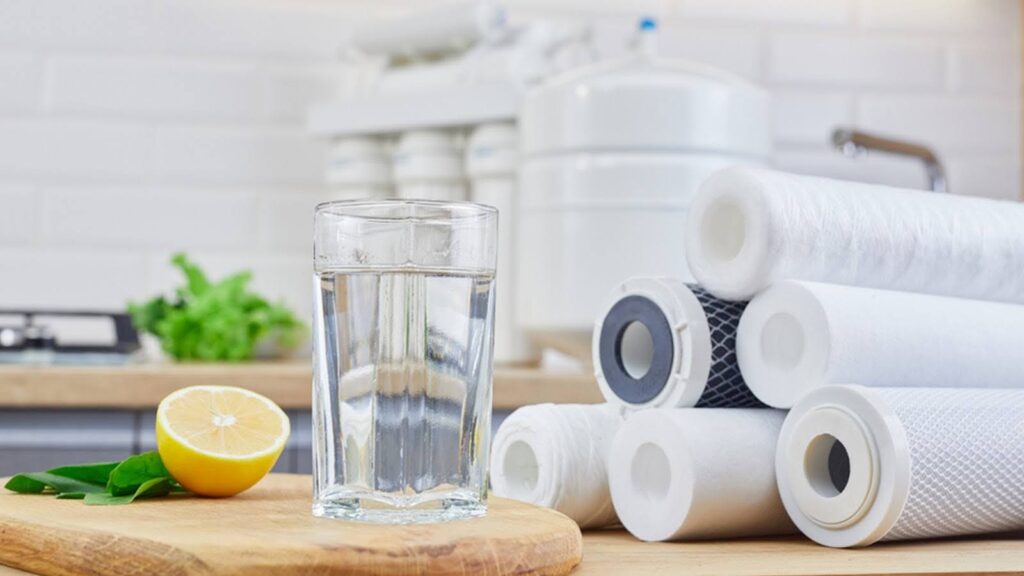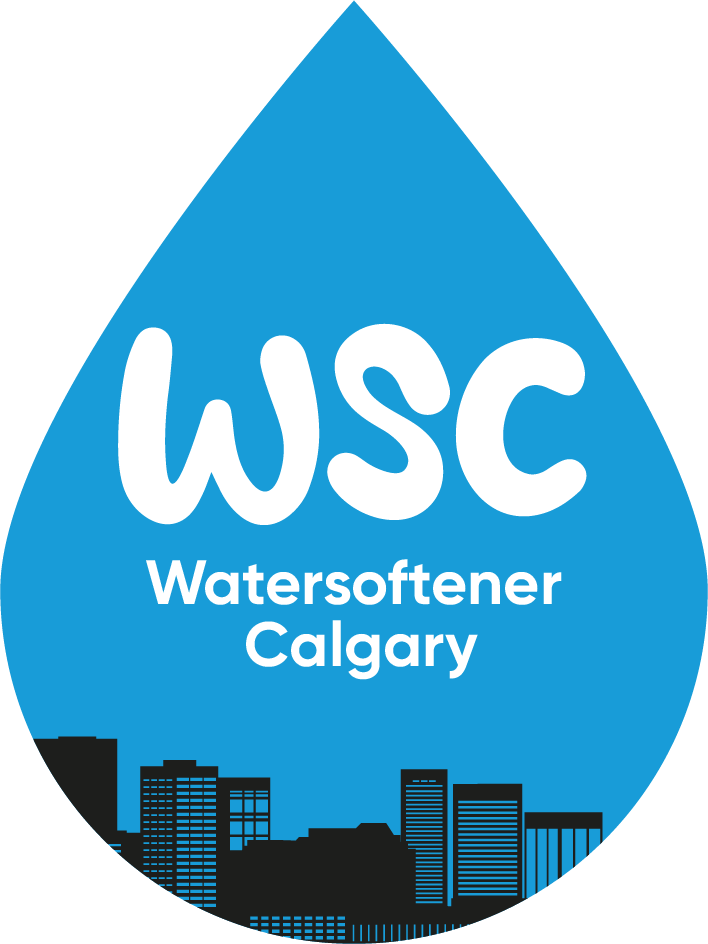Table of Contents
ToggleThe Thrill (and Risk) of DIY in Calgary Homes
Doing it yourself can save money and feel rewarding. But with Calgary’s very hard water and winter freeze risks, a DIY water softener install can go sideways if you’re not fully prepared. This guide walks you through the essentials: accurate testing, right-sizing, code-aware installation, and clear red flags that mean it’s time to call a pro.
For a broader primer, see our Calgary installation guide for what to expect before, during, and after a pro install.

Know Your Water First: Testing and Sizing Before You Touch a Wrench
How to Test Your Water
- Request a free hardness test from a local provider, or
- Use a home test kit (typically $20–$30).
- Report hardness in grains per gallon (GPG) or mg/L.
- 1 GPG = 17.1 mg/L
- Calgary averages about 10.5 GPG (~180 mg/L), which is very hard.
Sizing Your System
Match grain capacity to both hardness and daily water use.
| Household Size | Avg. Daily Water Use | Suggested Grain Capacity |
| 1–2 people | 150–200 L/day | 24,000–30,000 grains |
| 3–4 people | 300–400 L/day | 32,000–40,000 grains |
| 5+ people | 500–600+ L/day | 48,000+ grains |
Undersizing leads to rapid exhaustion and frequent regenerations; oversizing can waste salt and reduce efficiency.
Pre-Install Checklist: Tools, Space, and Safety Gear
Tools and Parts You’ll Likely Need
- Pipe cutter (copper or PEX), deburring tool
- Adjustable wrench and pipe wrench
- Teflon tape and appropriate fittings
- Flexible stainless or PEX connectors, shutoff valves
- PEX crimp tool (if using PEX)
- Drill, anchors, and wall mounts (as needed)
- A bucket or tub for drain testing
Safety Essentials
- Eye protection and gloves
- Towels or a shop vac
- Access to the main shutoff and isolation valves
Space Requirements
- Flat, level surface near the main water entry
- Nearby floor drain or laundry sink for brine discharge
- Standard 110V outlet (avoid extension cords
- About 3 feet of clear working space in front of the unit
- Avoid freeze-risk locations (garages/exterior walls) unless fully insulated
The 9-Step DIY Installation Process (With Calgary-Specific Tips)
1) Shut Off Water and Drain Pipes
Close the main shutoff. Open several faucets at lower and upper levels to relieve pressure and drain.
2) Choose Installation Location
Prefer a basement or utility room near the water entry, drain, and outlet. Leave room to access the brine tank and control head.
3) Cut Into the Main Line
Use a pipe cutter for clean cuts. Install tees and isolation valves for the softener inlet/outlet. Label lines clearly.
4) Attach Bypass Valve
Most modern softeners include a clip-on or integrated bypass. Keep it in bypass during initial hookup and programming.
5) Connect to Softener Head
Use flexible braided hoses or PEX. Respect flow direction: inlet = hard water in; outlet = soft water to the house. Keep exterior hose bibs and irrigation on hard water if desired.
6) Install Drain Line
Run the brine discharge to a floor drain or laundry sink. Calgary requires an approved air gap to prevent backflow contamination. Maintain a smooth route with proper slope.
7) Connect Overflow Line to Brine Tank
Strongly recommended for flood protection. Route to a safe drain point.
8) Plug In and Fill with Salt
Use high-purity pellet salt or potassium chloride. Fill the brine tank no more than two-thirds full initially.
9) Program System and Regenerate
Enter hardness, grain capacity, time, and regeneration settings. Initiate a manual regeneration and check all connections for leaks while it runs.
Avoiding the Top 7 Mistakes Calgary DIYers Often Make
- Installing after the hot-water line. The softener must treat cold water before it reaches the heater.
- No air gap on the drain line. Backflow protection is required; skipping it risks contamination and code issues.
- Wrong-sized system. Size for hardness and usage; don’t guess.
- Not flushing after install. Run several faucets for 10–15 minutes to clear resin fines and trapped air.
- Forgetting the overflow line. A single brine overflow can soak a basement.
- Ignoring freeze risks. Insulate lines near cold walls or unconditioned spaces.
- Skipping post-install testing. Re-test the hardness at a faucet to confirm proper softening.
What You Legally Need to Know: Permits, Codes, and Fines
Alberta/Calgary Notes
- Adding a softener to existing plumbing may not require a permit, but new plumbing or electrical work can.
- Discharge lines must include an approved air gap and respect drain slope/elevation rules.
- Homes with high incoming pressure may need a pressure-reducing valve.
- Installations must not obstruct water meter access.
When in doubt, confirm with the City of Calgary or a licensed plumber. Non-compliant installs can lead to failed inspections, insurance problems after water damage, or required rework during resale.
When to Stop and Call a Pro (Red-Flag Scenarios)
- Persistent leaks, hissing, water hammer, or pressure swings
- Drain line backups or brine overflows during regeneration
- The brine tank is not filling or is continuously filling
- Evidence of moisture in drywall, ceilings, or adjacent rooms
- You’re uncomfortable soldering copper or pressure-testing a new cut-in
Tip: If your home is predominantly copper and you’re not confident with sweat fittings, do not guess. Hire a pro for the cut-in and finish the rest yourself.
Aftercare Tips for a System That Lasts 10+ Years
Monthly
- Check salt level; top up as needed
- Break up salt bridges with a broom handle if the tank feels hollow under a crust
Quarterly
- Rinse and wipe the brine tank if you see sludge
- Inspect valve head and fittings; look for weeping leaks
Annually
- Replace sediment or carbon pre-filters
- Sanitize the softener with a softener-safe disinfectant
Every 3–5 Years
- Re-test home hardness to confirm settings are still right
- Inspect resin performance; some media may need replacement after 5–8 years, depending on water use and chlorine exposure
Final Thoughts: Confidence Is Great, But So Is Caution
A DIY install is achievable for a careful, well-prepared homeowner. But an incorrect install can affect water quality, appliance life, energy bills, and even insurance coverage. If anything feels uncertain, bring in a licensed Calgary installer for the cut-in or a post-install compliance check.
Need a second opinion or help with setup?
Water Softener Calgary provides no-pressure consultations, DIY Water Softener Installation Tips for Calgary Residents, post-install inspections, and full professional installations. Whether you need help sizing, programming, or verifying code compliance, local support is a call away.
Call us now at 587-400-0790 for a free water test in Calgary.



